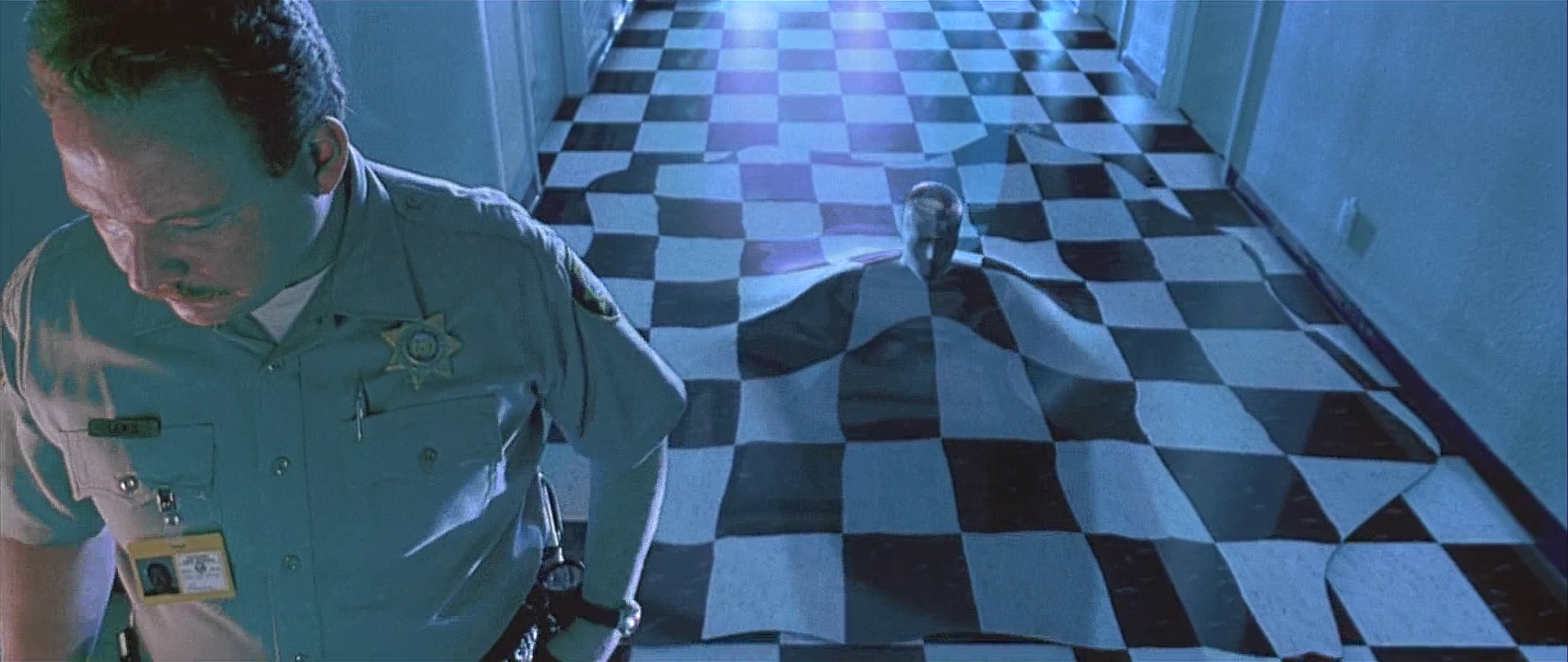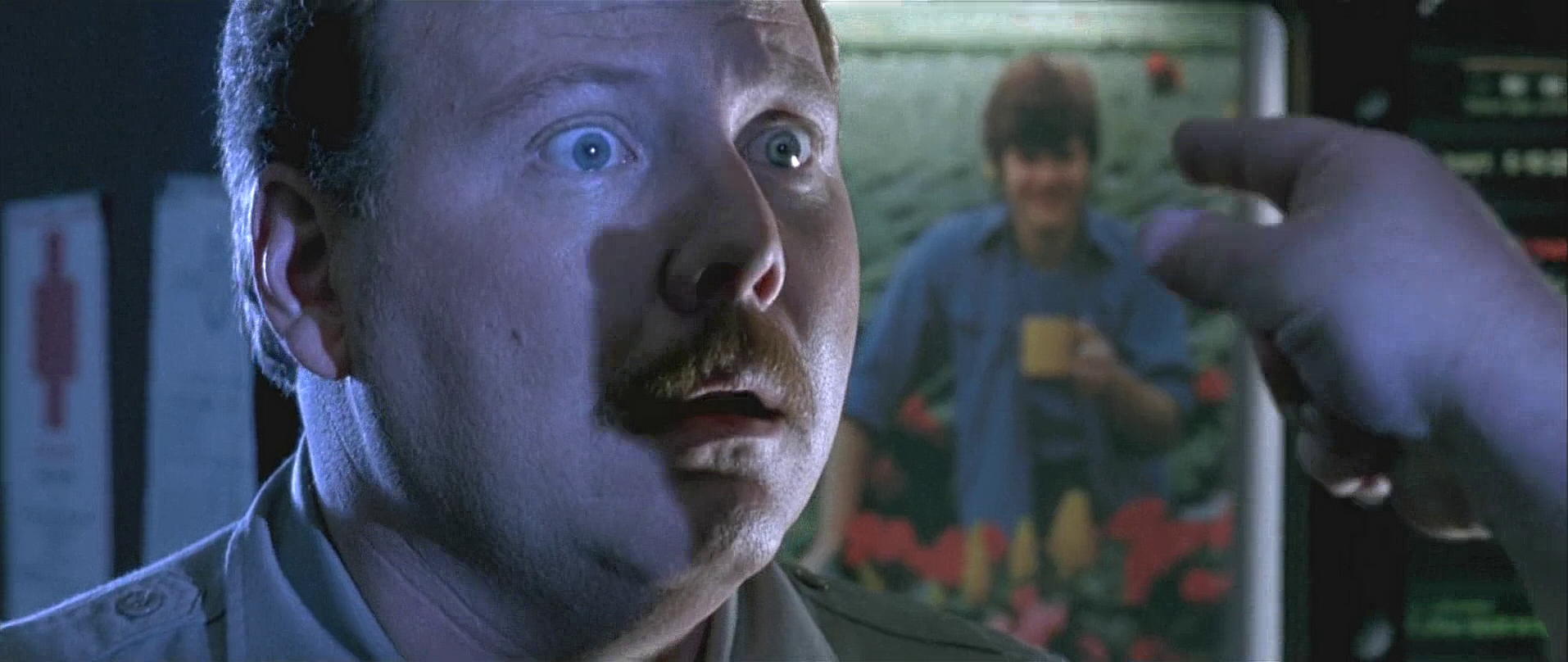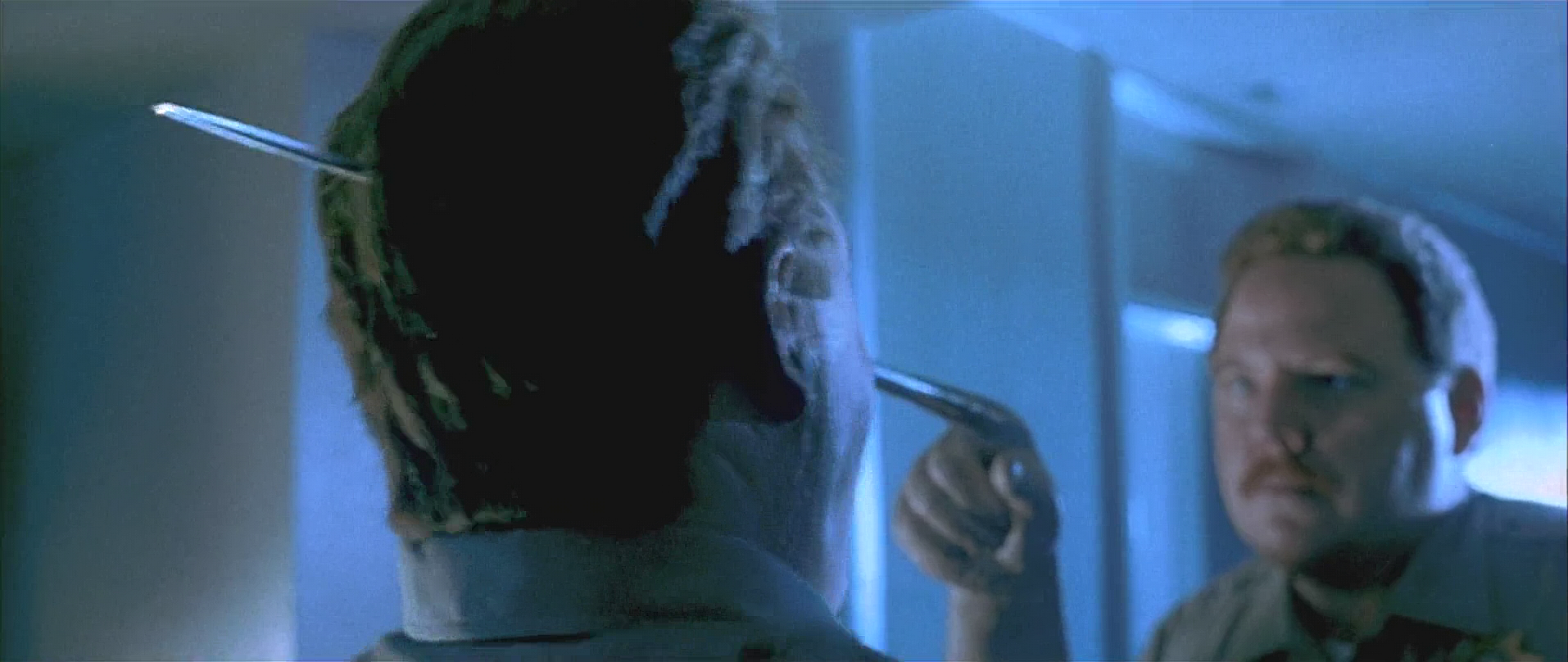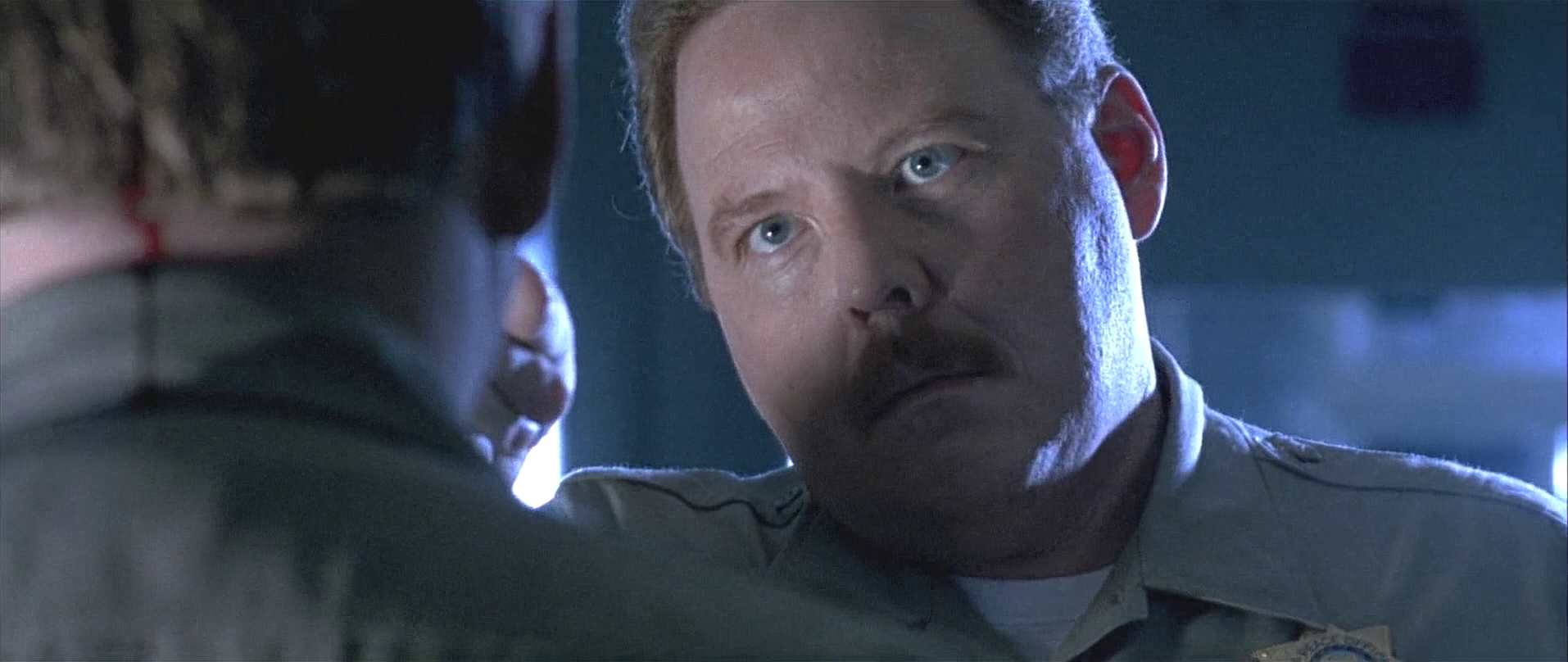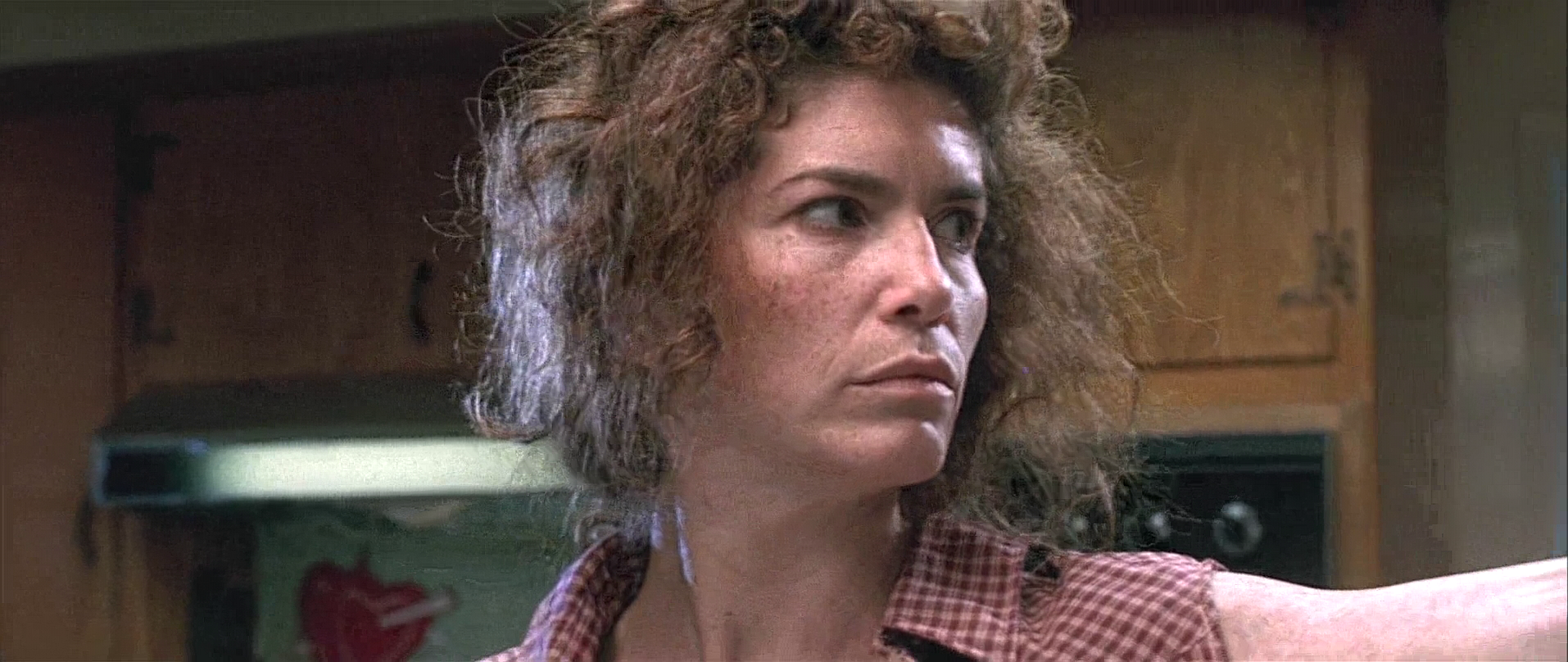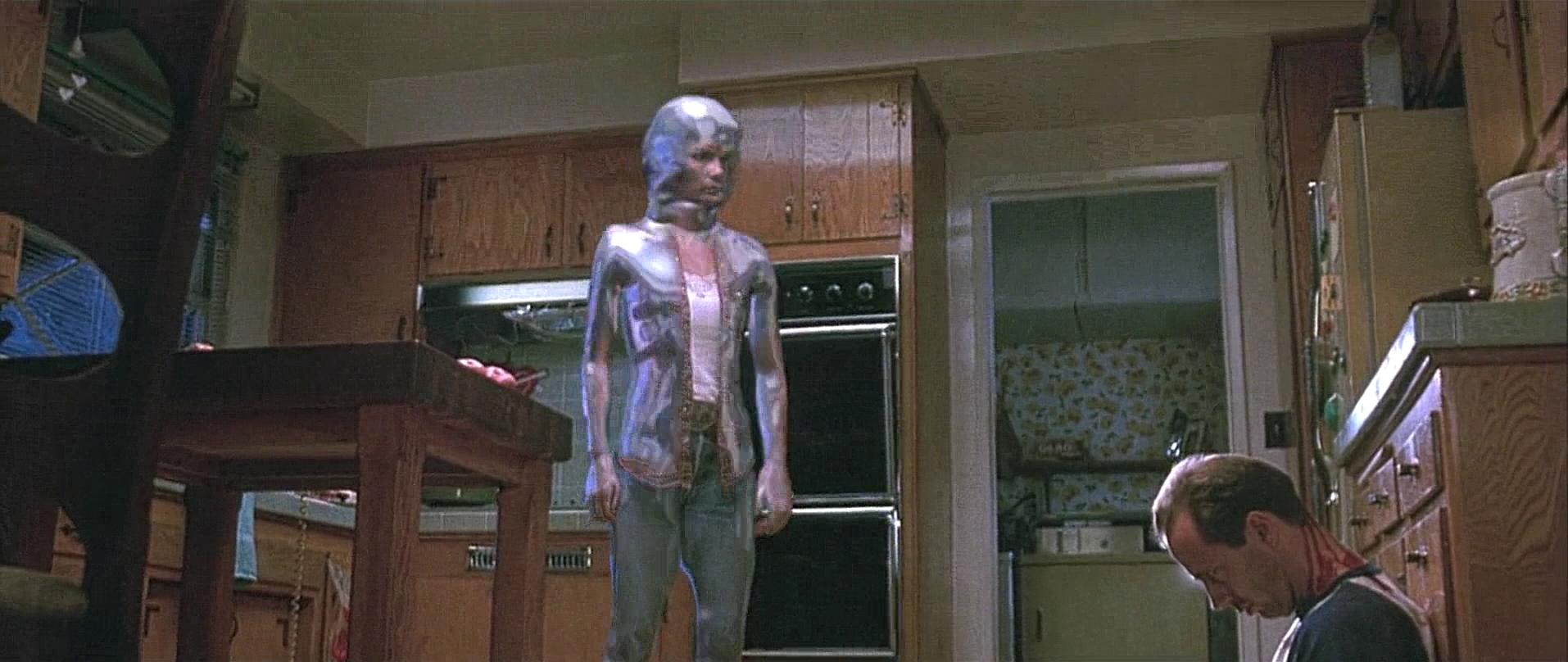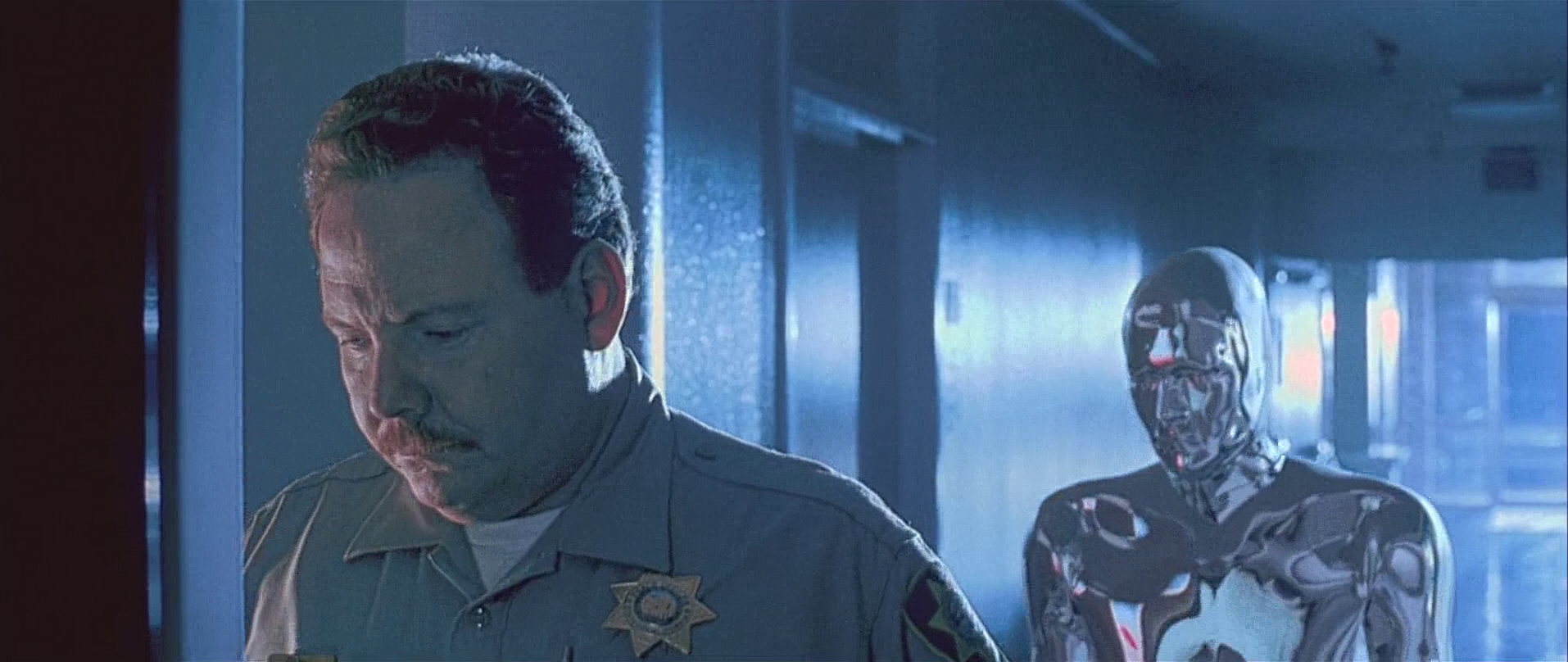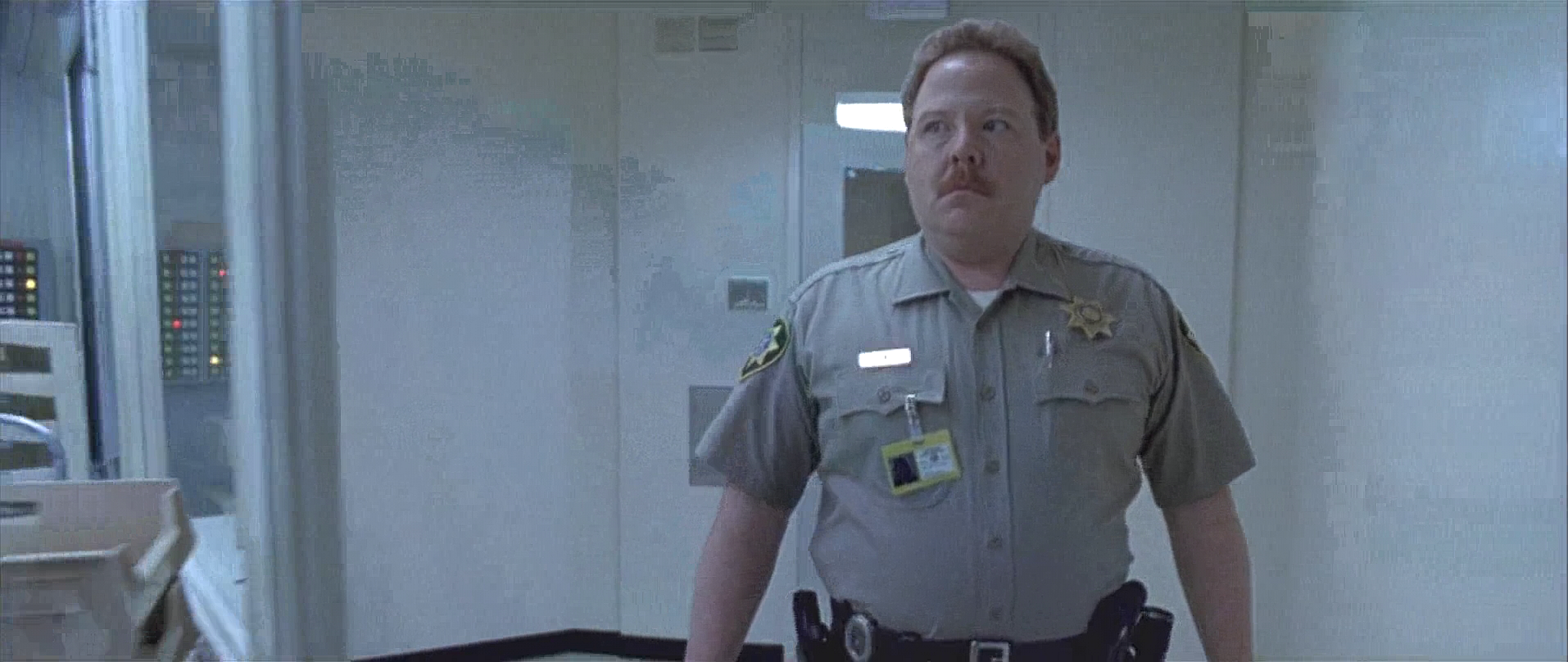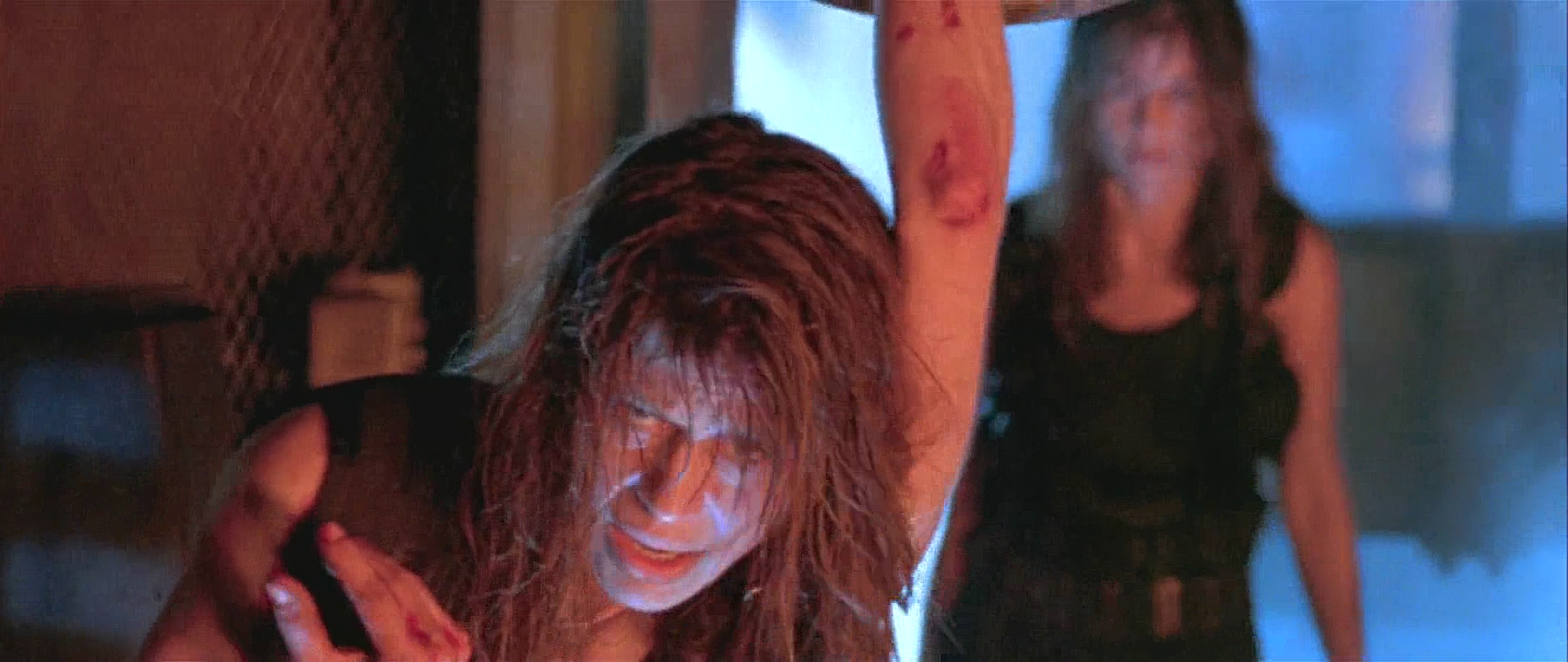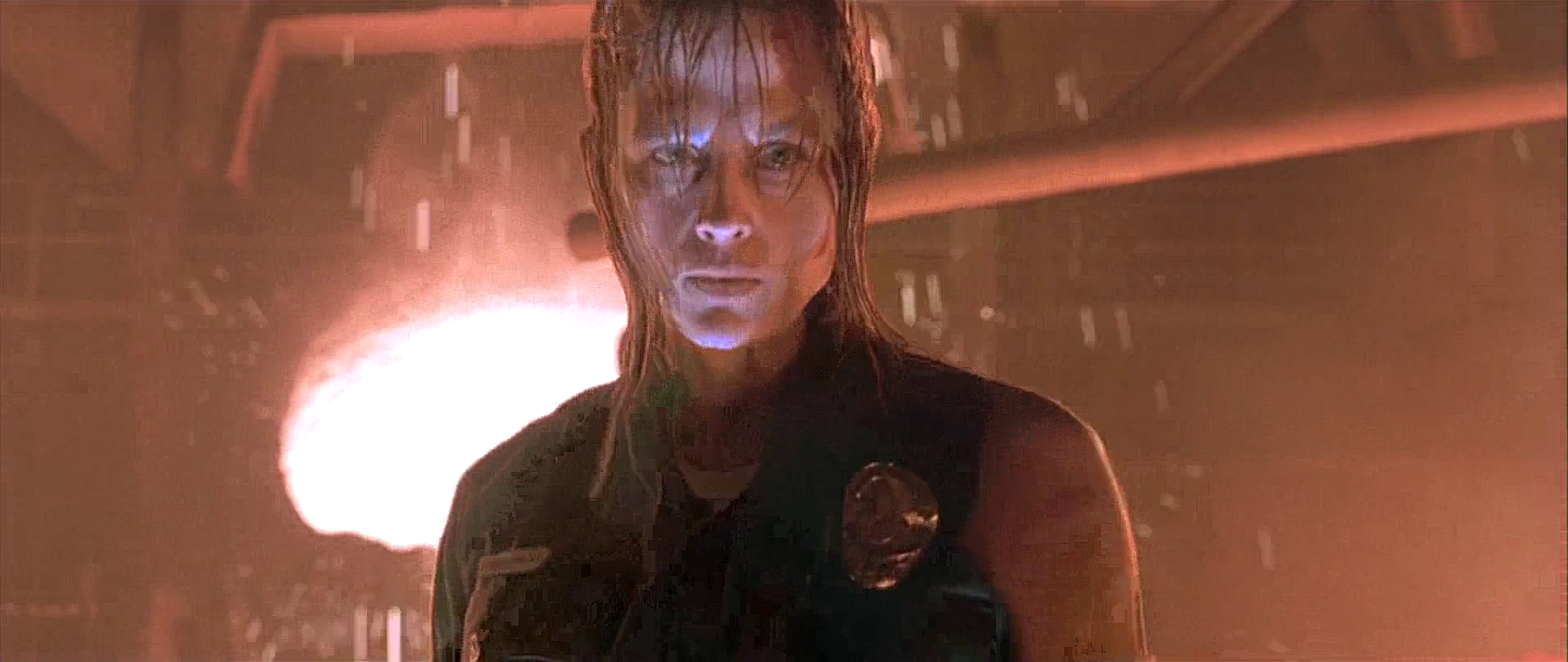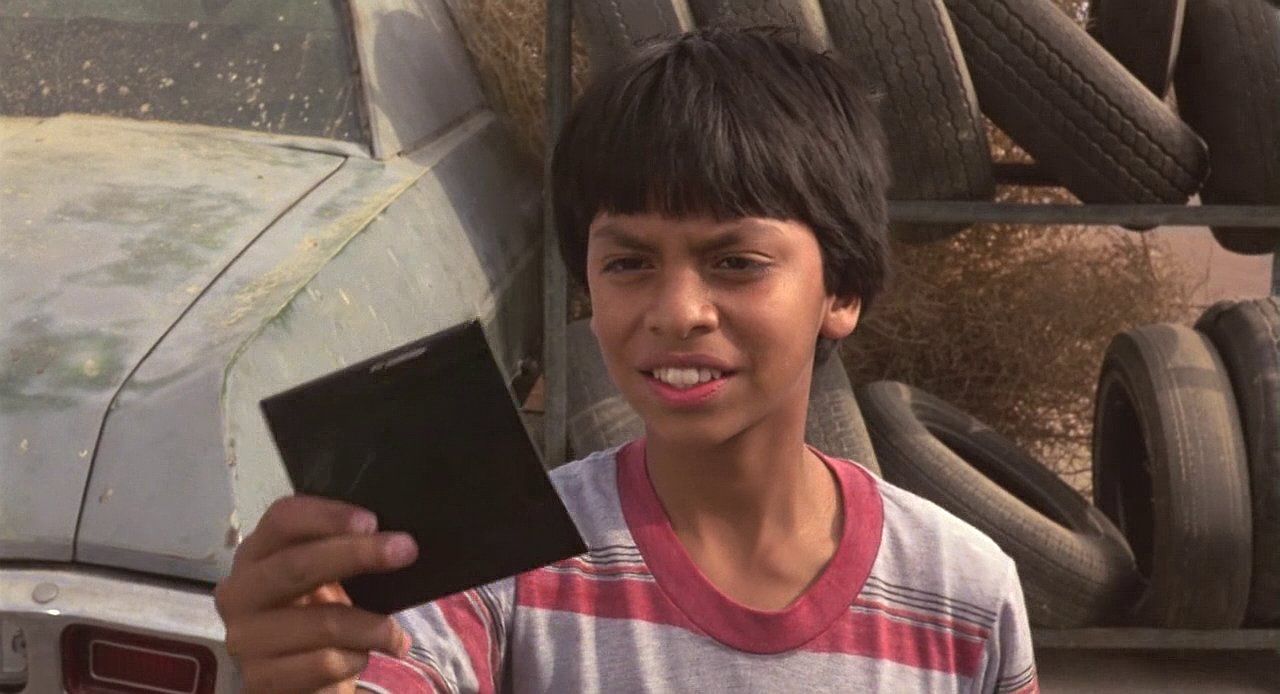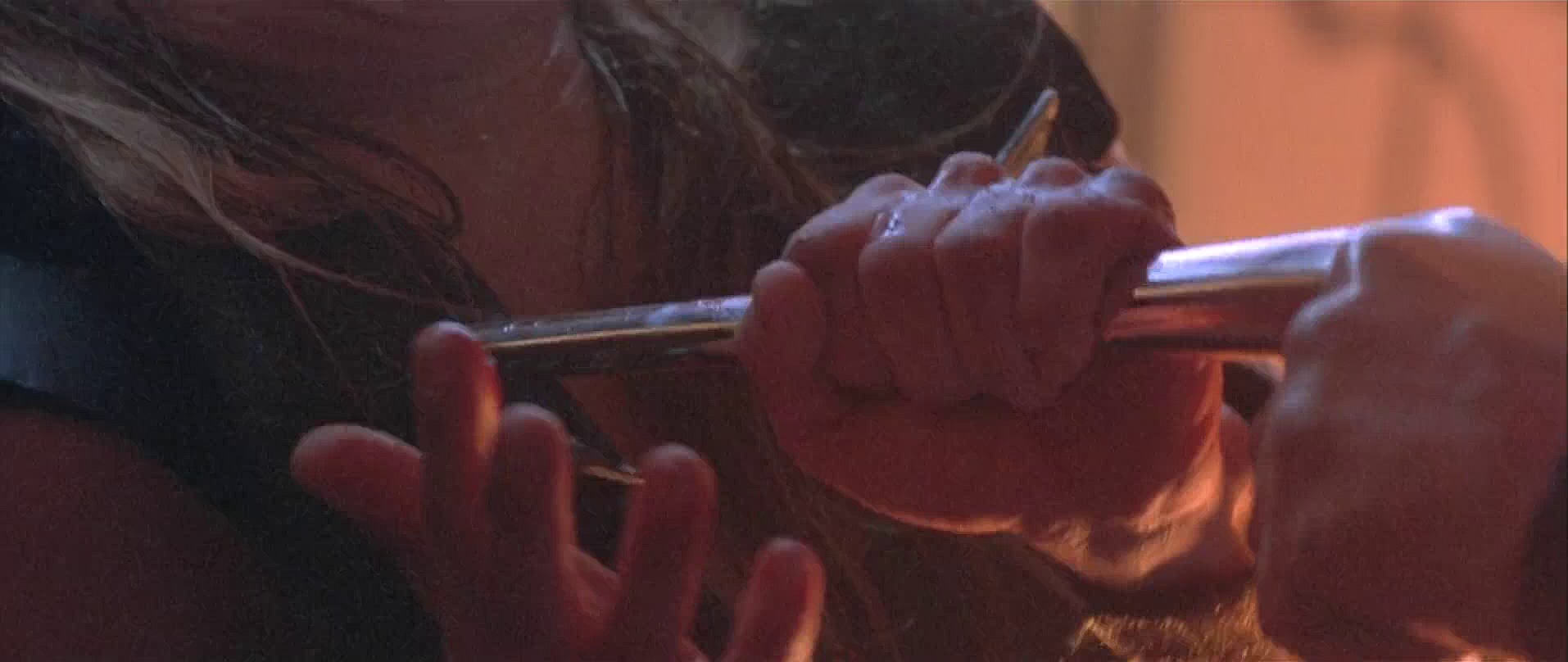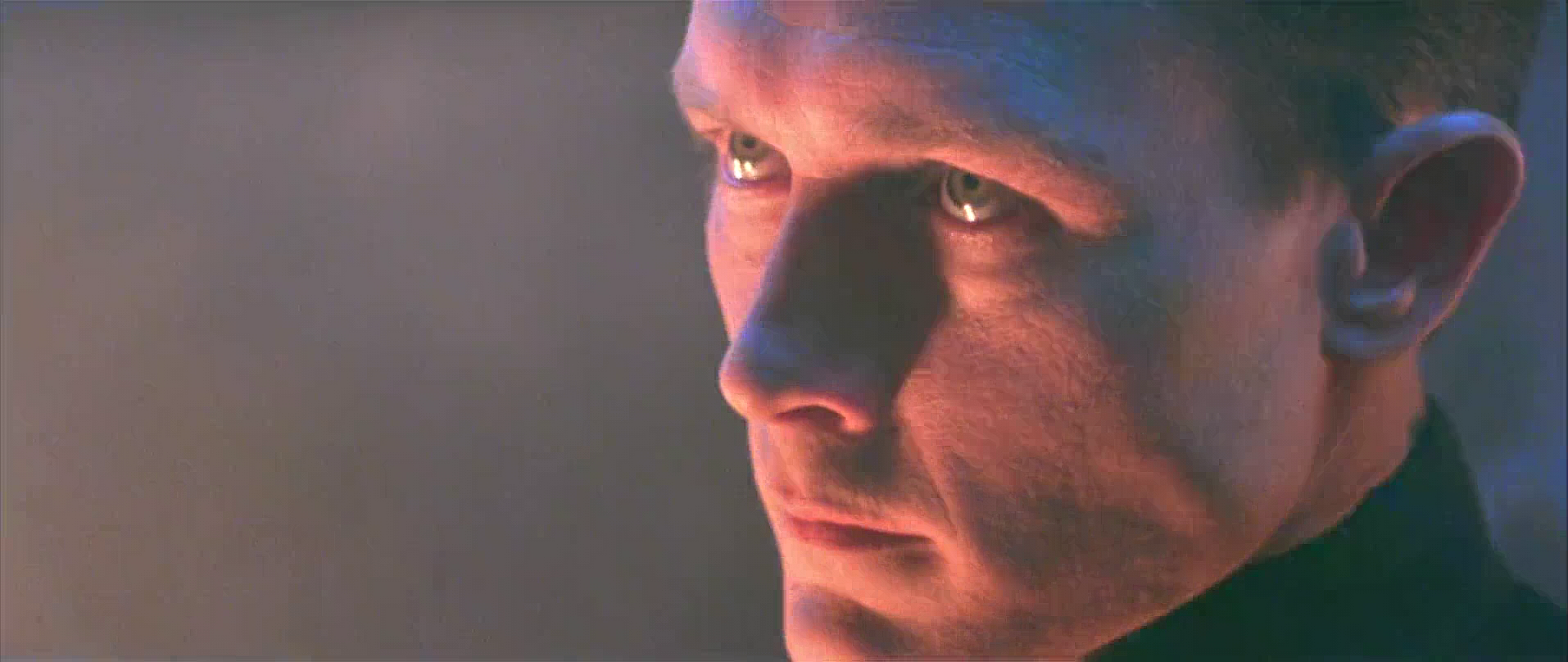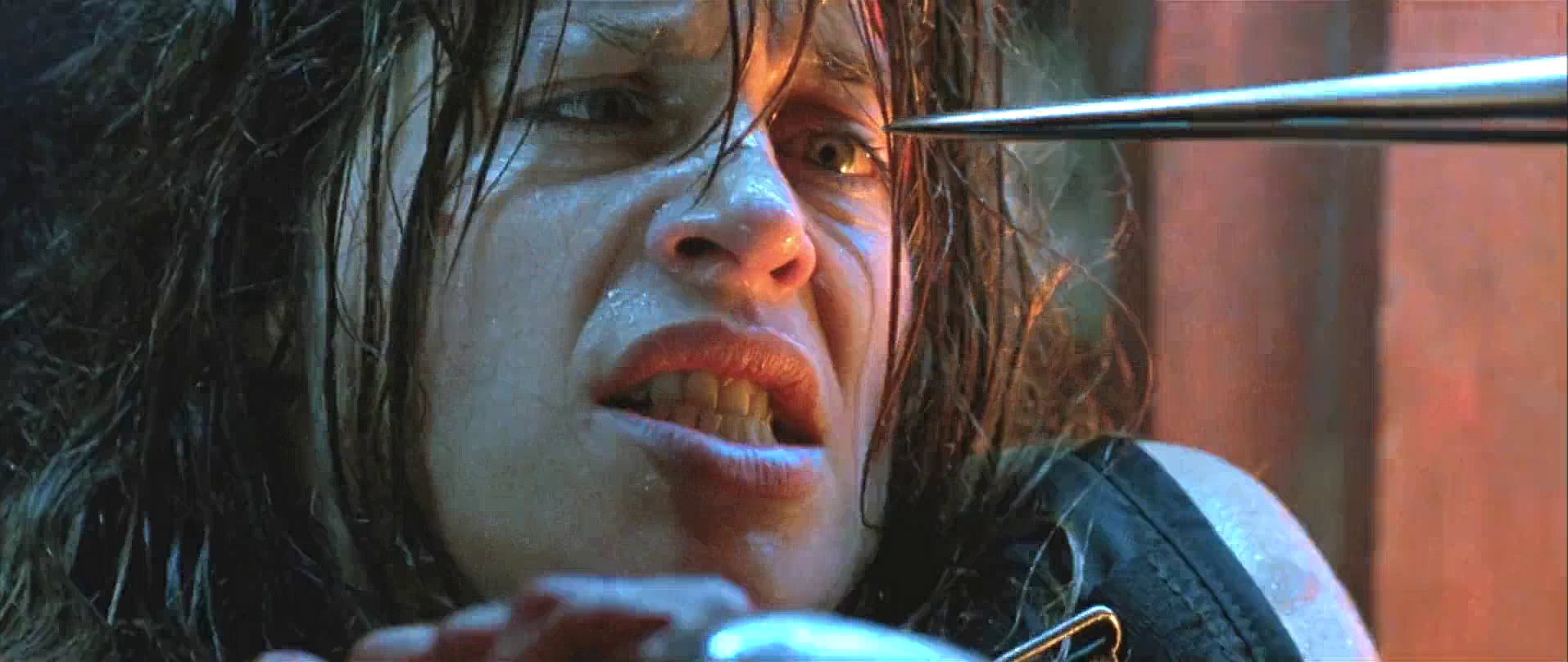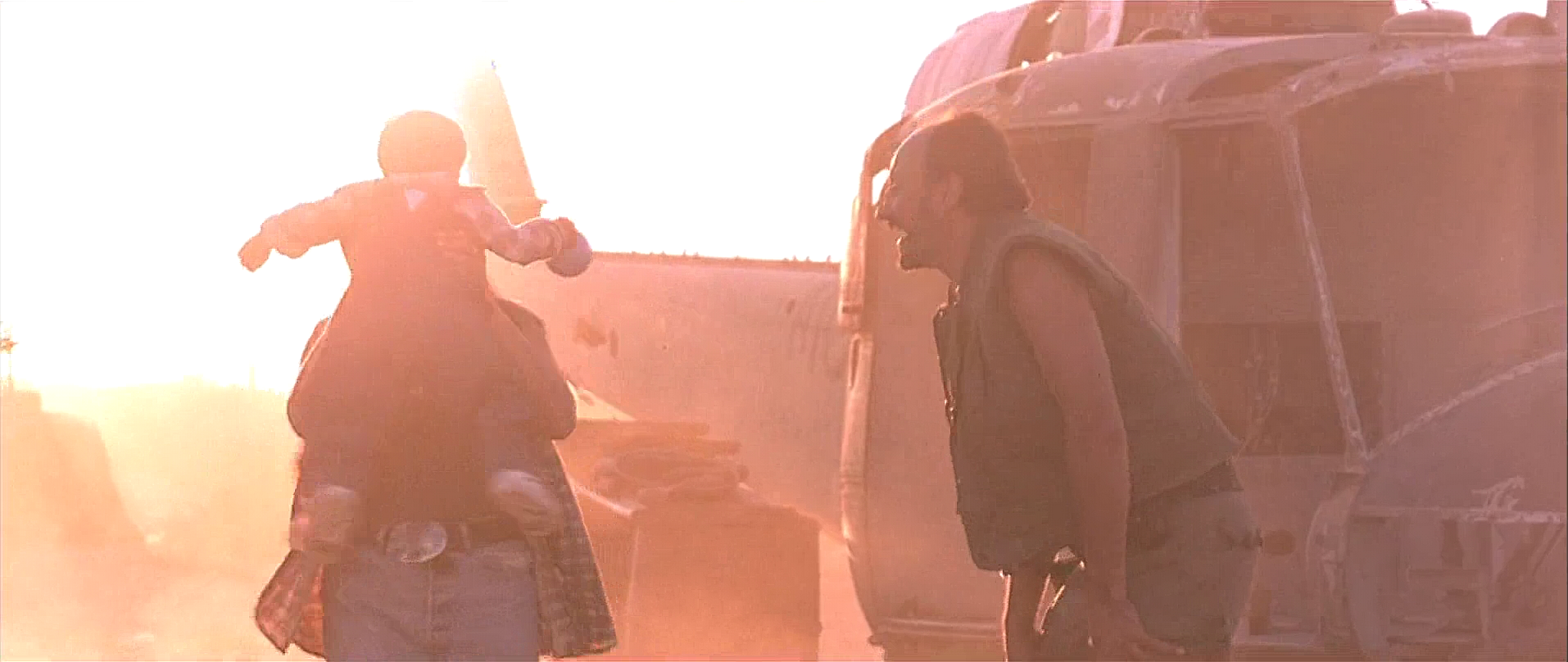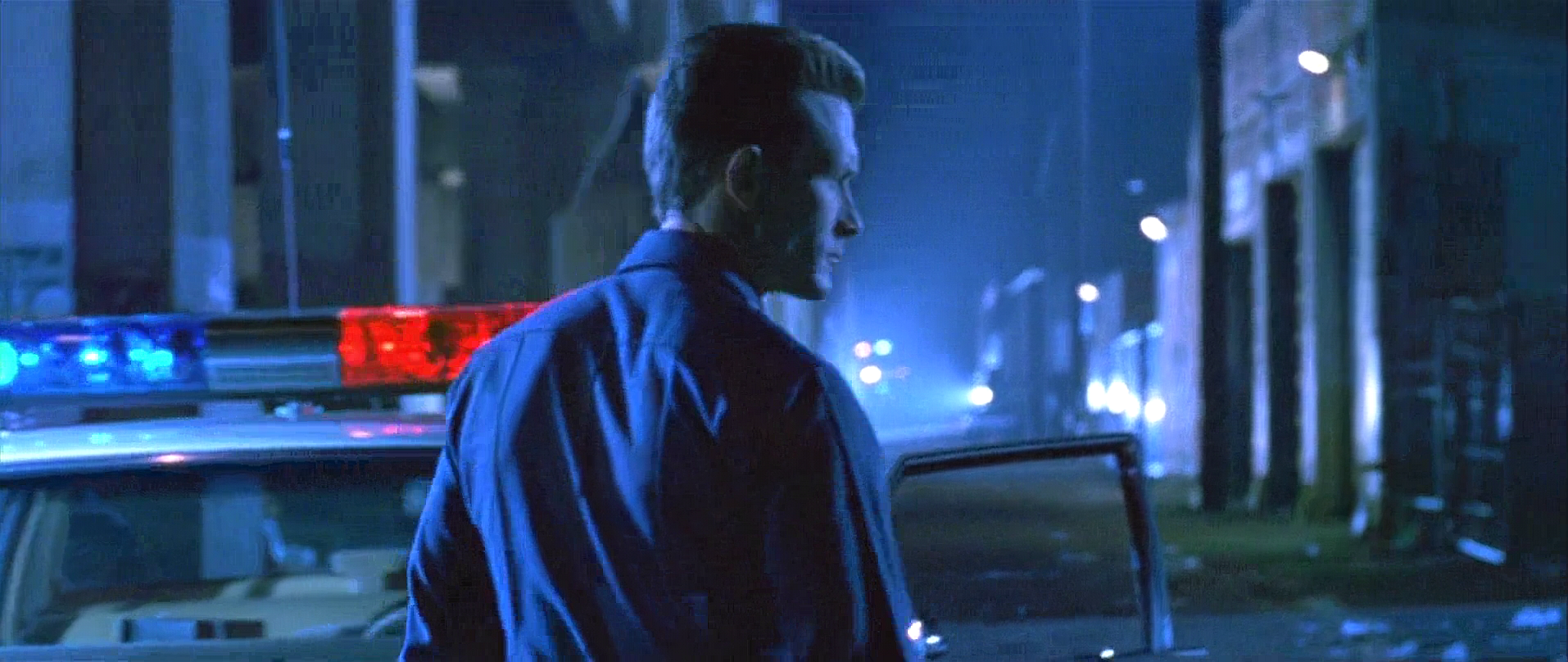A mimetic polyalloy
The scene with the Pescadero security guard demonstrates the T1000’s inner workings:
We see the T1000 abruptly pierce louis’ brain. Physical contact had already been made at this point, and while the T1000 could have terminated Louis without his knowledge, it waited for him to turn around and make eye contact.
Here, the T1000 is clearly processing its victim’s feelings – or, experiencing his fading brain functions. We also see this in the earlier scene with Todd Voight. After releasing Todd, the T1000 watches its hand slowly change back to human form. The fascination it shows with the transformation is unlikely to be due to the visual effect – as this is standard operating procedure. Instead, the T1000 is more likely to be engaged in processing the data which it acquired via physical contact - collating the memories and analyzing the final feelings of its victims – essentially, it’s an inversion of empathy - understanding how people feel, but with no intention of relating to their existence. Instead, it is a cold curiosity to understand what happens to humans as they die in abject fear.
Beyond this inverted empathy, there is a more primordial fear. In understanding this, we can reveal the reason why the T1000 evokes an existential dread each time it is onscreen.
T800: “Typically, the subject being copied is terminated.”
The T1000’s method of infiltration is to imitate the likeness of targets through physical contact. While it’s final resemblance is indistinguishable from the original, an intangible element of humanity is lacking. This evokes the uncanny valley effect – a strong emotional response (fear and revulsion) to an object that imperfectly resembles the human form. With the T1000, we get this effect multiple times – not only with each iteration, but also when it transitions between forms.
An obvious connection here, is to the folkloric idea of shape shifting entities. Beneath superstition however, is a more existential fear - one which reveals the reason for the T1000’s unnerving nature.
In replicating a human, the T1000 takes on their current form, thereby creating a snapshot of them - both before and after the encounter. For those unfortunate enough to interact with the T1000, the situation creates a paradoxical reality, similar to taking a polaroid photo.
The present is captured, but the instant the picture is taken, it becomes a symbol of the past. This is the same with the T1000 – the iteration that the victim sees instantly becomes a past version of themselves - calm, and unaffected by their impending termination. They see a version of themselves which has been wiped from the timeline - as their current self is consumed by fear. Added to this, not only will they cease to exist, but their timeline will be usurped by an impostor. This goes beyond identity theft, and become something much more personal.
“It’s a hell of a thing to kill a man. Take away all he’s got and all he’s ever gonna have.”
Will Munny - Unforgiven
The current iteration – the result of a lifetime of struggles and developments is replicated effortlessly. Beyond the taking of a person’s life, it is the belittling of their existence to a single point of data, a lifetime’s struggle captured on a computer chip
This paradox is further heightened by the rapid morphing of the T1000 when it switches between forms. In a human, iterations stretch out over time, making change a slow process. With the T1000 however, we see immediate transformation. This trivializes the changes that we go through by showing the ease with which the T1000 can iterate. To put it bluntly, we have created something evolutionarily superior, that has outgrown us in both a literal and metaphorical sense. Therefore, beyond the fear of termination, there is a more disturbing element to the T1000. It touches the deeper fear that we are not the most intelligent creature in existence, and that our existence is not as profound as we think it is.
"The ego is not master in its own house."
– Sigmund Freud
Now that we understand this deeper fear that the T1000 evokes, we return to its interaction with Sarah.
“I know this hurts”
As the camera cuts to tighter shots of Sarah and the T1000, the intensity is heightened by the eye contact and sparsity of words. It ceases to be an action movie, and for a moment, the series returns to its horror roots.
The T1000 has intimate physical contact. The haunting line “I know this hurts” alludes to an understanding of what’s happening within Sarah – understanding her thoughts, and gaining the ability to emulate her.
As the T1000 points its other finger, the frantic lighting creates a mix of oranges and blues between both figures. This color scheme has a strong presence throughout the film, creating motifs of humanity and machinery: the bright, human colors seen in the desert, and the icy cold blue of the terminators.
As Sarah stares death in the face, we see a mixture of orange and blue, blood and liquid metal, sweat and steel. It’s Cronenbergian body horror. The mixing of humanity and machinery is reflected in Sarah’s eyes – like the T1000, she has gone through multiple iterations. This can be seen in her shifting mindset throughout the film.
In the mental institute:
Sarah Connor: “You have to let me see my son. He’s naked without me”
At Dyson’s house:
“I’m not gonna let you do it.”
Sarah in the steel Mill:
T1000: “Call to John now.”
Sarah Connor: “fuck you”
Her new iteration has taken over – she has overwritten both the manic mental patient and the emotionless husk bent on killing Dyson – here she is a combination of human emotion and machine-like objectivity – protecting her son no matter the cost.
As memorable as the changes have been up to this point, it is here where we see the ultimate iteration of each of our characters, and the final deconstruction of the singular identity.


